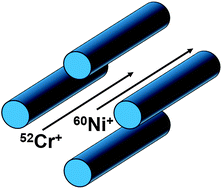Analytical method for total chromium and nickel in urine using an inductively coupled plasma-universal cell technology-mass spectrometer (ICP-UCT-MS) in kinetic energy discrimination (KED) mode†
Abstract
Biomonitoring and emergency response measurements are an important aspect of the Division of Laboratory Sciences of the National Center for Environmental Health, Centers for Disease Control and Prevention (CDC). The continuing advancement in instrumentation allows for enhancements to existing analytical methods. Prior to this work, chromium and nickel were analyzed on a sector field inductively coupled plasma-mass spectrometer (SF-ICP-MS). This type of instrumentation provides the necessary sensitivity, selectivity, accuracy, and precision but due to the higher complexity of instrumentation and operation, it is not preferred for routine high throughput biomonitoring needs. Instead a quadrupole based method has been developed on a PerkinElmer NexION™ 300D ICP-MS. The instrument is operated using 6.0 mL min−1 helium as the collision cell gas and in kinetic energy discrimination mode, interferences are successfully removed for the analysis of 52Cr (40Ar12C and 35Cl16O1H) and 60Ni (44Ca16O). The limits of detection are 0.162 μg L−1 Cr and 0.248 μg L−1 Ni. Method accuracy using NIST SRM 2668 level 1 (1.08 μg L−1 Cr and 2.31 μg L−1 Ni) and level 2 (27.7 μg L−1 Cr and 115 μg L−1 Ni) was within the 95% confidence intervals reported in the NIST certificate. Among-run precision is less than 10% RSDs (N = 20) for in house quality control and NIST SRM urine samples. While the limits of detection (LOD) for the new quadrupole ICP-UCT-MS with KED method are similar to the SF-ICP-MS method, better measurement precision is observed for the quadrupole method. The new method presented provides fast, accurate, and more precise results on a less complex and more robust ICP-MS platform.

- This article is part of the themed collection: 2014 Young Analytical Scientists

 Please wait while we load your content...
Please wait while we load your content...